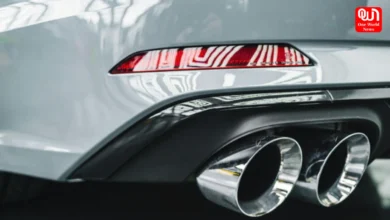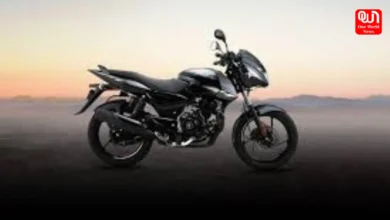India’s Auto Retail Sales Accelerates This December Witnesses 21% Surge, Annual Growth Hit 11% in 2023, Reports FADA
In a dynamic upswing, India's auto retail Sales experienced a remarkable 21% surge in December, contributing to an annual growth of 11% in 2023, as reported by FADA.
Robust Year-End Performance FADA Data Reveals Sustained Momentum in Indian Auto Retail Sales, Marking a Strong Finish to 2023
The latest FADA data for year-end performance in India’s auto retail Sales underscores a robust and sustained momentum, signaling a formidable conclusion to the year 2023. The statistics reveal a steadfast resilience and positive trajectory in the industry, showcasing the resilience of the Indian automotive market amidst challenges. This strong finish not only reflects the industry’s ability to adapt but also suggests consumer confidence and a buoyant market demand. As the sector embraces the future, these encouraging year-end results set a promising tone for the continued growth and dynamism of the Indian automotive landscape in the coming years.

read more: Ducati Upcoming Bikes In India: Multistrada V4RS To Hypermotard 698 Mono, Check Full List Here
December 2023 witnessed a substantial surge in retail India’s auto sales, reaching 1,990,915 units—an impressive 21% increase from the previous year. Data released by the Federation of Automobile Dealers Associations (FADA) on Monday revealed this positive trend, contrasting with December 2022’s 1,643,514 units. The overall performance in the calendar year 2023 showcased an 11% rise, totaling 23,867,990 units against 21,492,324 units in 2022. However, the month-on-month comparison indicated a 30.25% decline from November 2023’s 2,854,242 units, emphasizing the dynamic nature of the market.
We’re now on WhatsApp. Click to join.
The Indian auto industry collectively reported retail sales of 21,17,596 units in October 2023, a decline of 8 per cent year-on-year. Details here:@FADA_India https://t.co/wdrBSJgTgk
— carandbike (@carandbike) November 6, 2023
read more: Best Sports Bikes From KTM that are Epitome of Power and Performance
Throughout the month, every automotive category displayed favorable growth in India’s retail sales. Notably, two-wheeler sales surged by an impressive 28%, three-wheelers saw a remarkable 36% increase, passenger vehicles (PVs) experienced a 3% rise, tractors exhibited a modest 0.2% growth, and commercial vehicles (CVs) recorded a steady uptick of 1.3%. The positive momentum extended into the overall annual performance for 2023, where each segment contributed to a thriving market. Two-wheeler sales demonstrated a robust growth of 9.5%, three-wheelers soared by an outstanding 58.5%, PVs maintained an upward trajectory with an 11% increase, tractors reported a solid 7% growth, and CVs showed resilience with an 8% expansion. Manish Raj Singhania, President at FADA, attributed the substantial increase in two-wheeler sales to the abundance of marriage dates and the distribution of harvest payments to farmers, significantly bolstering their purchasing power. This insightful analysis sheds light on the key factors influencing the diverse growth patterns across the automotive landscape in India.
Furthermore, the thriving automotive market in December can be attributed to an array of factors. The wide availability of diverse models and variants, favourable weather conditions, and positive market sentiment collectively propelled robust growth. Manish Raj Singhania, President at FADA, highlighted the increased acceptance of products, especially among the youth, and attractive financial options. Anticipating price hikes in January 2024 further accelerated the consumer purchasing trend. Within the commercial vehicle (CV) category, positive growth was fueled by heightened industrial activity and infrastructure development. The bus segment, particularly in tourism and transportation, experienced a notable uptick due to orders from various state transport departments. Singhania underscored the pivotal role of robust liquidity in rural areas and the financial boost from crop sales, supporting customer purchases, despite retail cases exhibiting some restraint. In the passenger vehicle (PV) segment, SUVs, in particular, witnessed a surge in demand, leading to extended waiting periods for key models. Aggressive year-end promotions and the introduction of new models propelled this heightened demand. However, Singhania cautioned that high inventory levels continue to be a significant concern, emphasizing the need for strategic management in the market.
read more: 5 New Bike & Scooter Launches In January 2024 In India
FADA’s recent data analysis reveals a persistent challenge in the automotive sector, particularly concerning the average inventory levels. For passenger vehicles (PVs), the average inventory hovers between 55 to 58 days, indicating an enduring issue despite a marginal reduction by the year’s end. Manish Raj Singhania, President at FADA, emphasized the critical need for original equipment manufacturers to address this matter urgently, underscoring the importance of continued moderation in inventory management strategies. Looking ahead, the near-term and short-term outlook for auto sales remains positive, albeit with an anticipated slowdown during the Kharmas period from December 16 to January 15. Singhania emphasized the necessity for companies to exhibit deftness in managing their inventories to navigate through potential challenges. Despite the expected downturn, the industry maintains a posture of cautious optimism, driven by the introduction of new models expected to sustain market enthusiasm. FADA stressed the importance of focused efforts on effective supply and inventory management, particularly within the PV category. In recognizing each sector’s growth potential within the auto retail industry amid dynamic market conditions, FADA highlighted the paramount role of meticulous supply and inventory management. The industry’s resilience and growth outlook depend heavily on adept navigation through these challenges, reinforcing the need for strategic measures to ensure sustained success.
Conclusion
In conclusion, FADA’s data underscores the challenges of persistently high average inventory levels in the automotive sector, particularly for passenger vehicles. Despite this, the industry maintains a positive outlook, driven by diverse factors and cautious optimism. Effective supply and inventory management remains crucial for sustained success amid dynamic market conditions.
Like this post?
Register at One World News to never miss out on videos, celeb interviews, and best reads.








